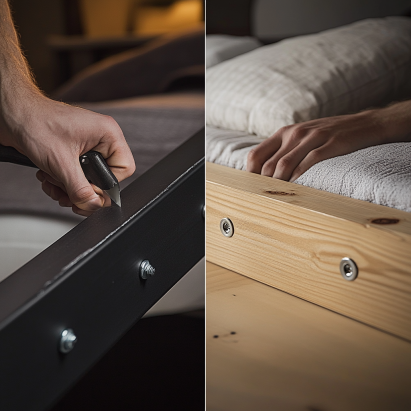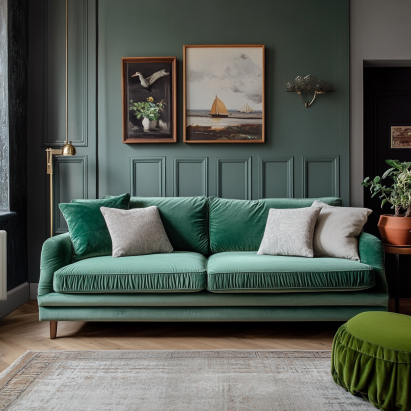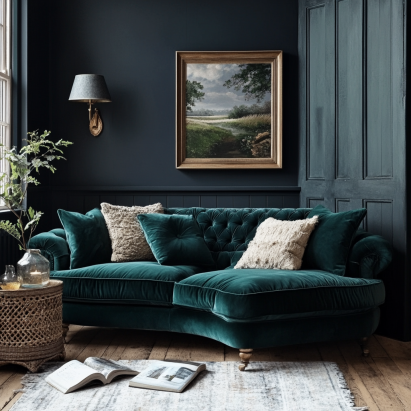Metal vs Wood Bed Frame Noises
A noisy bed frame can feel like a nighttime nemesis—just when you’re ready to drift off, a creak or squeak jolts you back awake. Whether you own a sleek metal frame or a classic wooden one, understanding the causes of these sounds and how to resolve them can transform your sleep quality. In this guide, we’ll explore metal vs wood bed frame noises, compare their pros and cons, and offer actionable fixes to help you sleep silently and soundly.
Key Takeaways
- Metal vs wood bed frame noises differ in pitch and frequency—metal squeaks and rattles, wood creaks and flexes.
- Loose joints, humidity, and uneven floors are the biggest culprits for noisy frames.
- Simple fixes like tightening bolts, adding washers, or applying wax can silence most sounds.
- Choosing the right frame depends on your noise sensitivity, durability needs, and room environment.
1. Common Sources of Metal vs Wood Bed Frame Creaks
Whether your bed frame is crafted from steel or oak, noise issues often stem from a handful of common culprits:
- Loose joints: Over time, the fasteners that hold your bed together—like bolts, screws, and brackets—can become loose, leading to instability and noise.
- Weight stress: Placing excess weight on your bed can strain the joints and supports, especially if the frame isn’t designed for heavier loads.
- Environmental factors: Humidity, room temperature changes, or an uneven floor can cause warping or shifting, amplifying squeaks or creaks.
For regular upkeep, check out our bed frame maintenance tips. Additionally, consult the Sleep Foundation’s bed care guide.
2. Metal Bed Frame Noises – What Causes Them?
Metal frames are durable, modern, and often easy to assemble. However, they can be more prone to certain noise issues due to their construction:
- Squeaking: Metal parts rubbing against each other often produce high-pitched squeaks.
- Rattling: If bolts loosen, movements on the bed can cause rattling or clanging.
- Temperature effects: Metal expands and contracts with room temperature, sometimes creating subtle popping sounds.
How to Fix Metal Bed Frame Noises:
- Tighten all fasteners with a wrench or ratchet tool.
- Use rubber washers or felt pads between joints.
- Place a rug or mat beneath the bed to stabilize it.
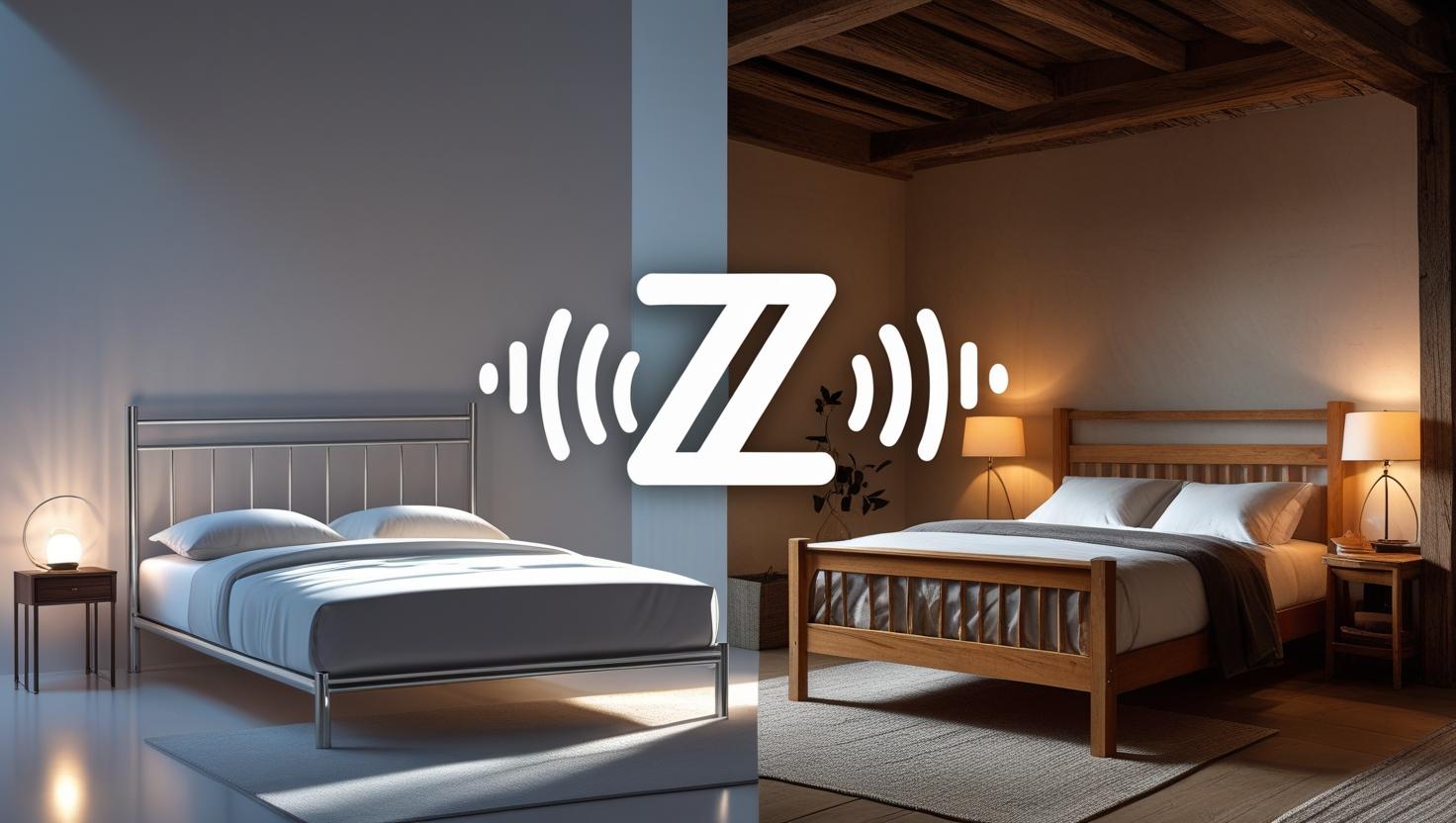
3. Wood Bed Frame Noises – Understanding the Cause
Wooden bed frames are admired for their warm aesthetics and natural vibe, but they come with their own sound-related quirks:
- Creaking: Wooden parts rubbing or flexing under weight.
- Shrinkage and swelling: Humidity changes cause joints to shift noisily.
How to Fix Wooden Frame Noises:
- Tighten screws with a screwdriver or drill.
- Apply beeswax or wood-safe lubricant.
- Use anti-slip pads between the mattress and frame.
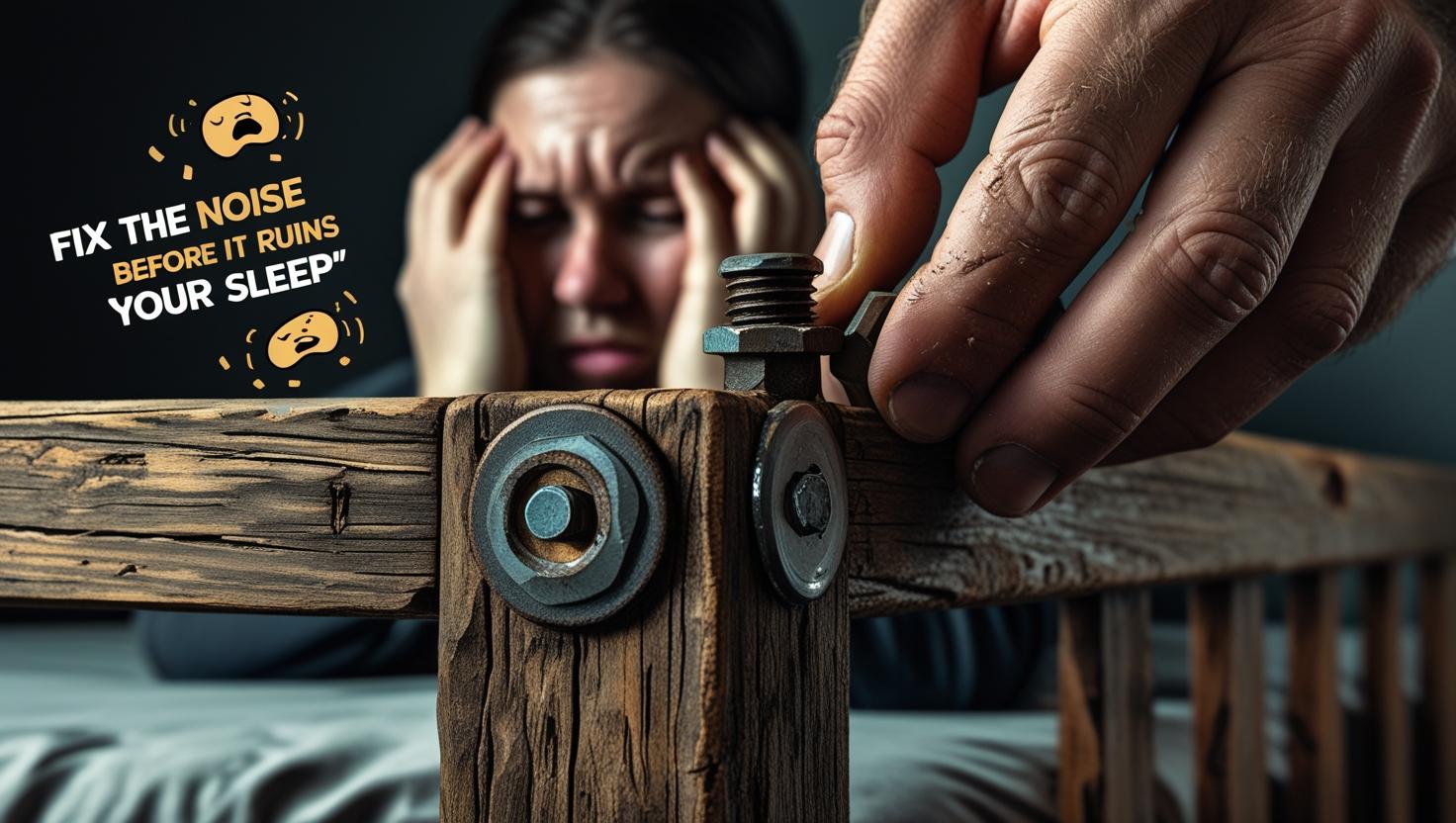
4. Comparing Metal vs Wood Bed Frame Noises
| Aspect | Metal Bed Frame | Wood Bed Frame |
|---|---|---|
| Noise Potential | Higher (squeaking/rattling) | Moderate (creaking) |
| Durability | High | Moderate |
| Maintenance | Low | Occasional care |
5. Which Bed Frame Noises Are More Manageable?
If you’re a light sleeper or sensitive to sudden sounds, a wood bed frame might be more manageable. On the other hand, if durability and easy upkeep are priorities, a metal frame could be worth the trade-off in sound.
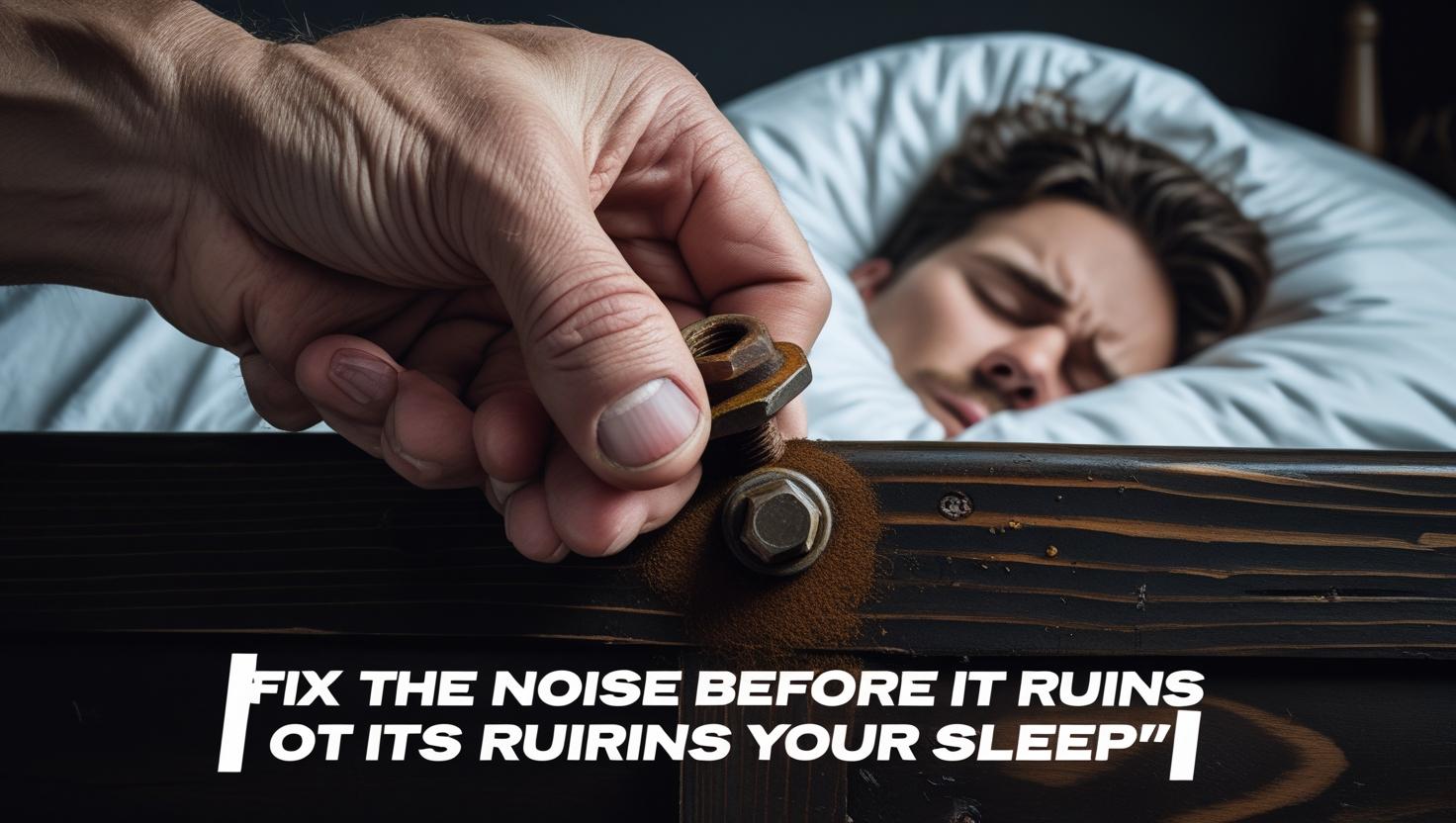
6. General Tips to Prevent Bed Frame Noises
- Set your bed on a level, solid surface.
- Tighten all screws and bolts every 6 months.
- Add padding like foam tape to joints.
- Invest in a mattress that complements your frame.
For help choosing, check out our mattress selection guide. Sleepopolis also offers a thorough review roundup.
7. When Should You Replace Your Bed Frame?
- Persistent noises remain even after fixes.
- Visible damage—cracks in wood or bent metal supports.
- Your mattress no longer fits or exceeds weight limits.

Tips on Choosing the Right Bed Frame for Noise Sensitivity
- Look for tight joinery in wooden frames or rubber-dampened joints in metal models.
- Consider hybrid designs for balance.
- Eco-conscious? Explore sustainable bed frame options.
Additional Factors Influencing Bed Frame Noises
- Flooring type: Hardwood and tile echo more than carpet.
- Box springs vs platform bases: Box springs creak more.
- Sleep movement: Active sleepers should seek sturdy joints.
Conclusion
The debate between metal vs wood bed frame noises ultimately boils down to your sleep style and preferences. Both materials have their pros and pitfalls. With proper care, thoughtful selection, and some soundproofing tricks, you can enjoy a noise-free sleep environment.
Looking for planet-friendly options? Don’t miss our guides to eco-friendly bed frames and sustainable beds.
Frequently Asked Questions (FAQ)
1. Why does my bed frame make noise when I move?
Usually caused by loose joints, friction, or instability. Tighten screws, lubricate joints, and use washers or pads.
2. Is a metal or wood bed frame quieter?
Wood frames are generally quieter, producing deeper creaks. High-quality metal frames with rubber dampeners can also be silent. See our quiet bed frame reviews.
3. Can I fix a squeaky bed frame without tools?
Yes—use beeswax, candles, or felt pads for minor fixes. But lasting fixes usually require a screwdriver or wrench.
4. How often should I tighten bed frame screws?
Inspect and tighten every 4–6 months to prevent noise from humidity shifts and daily use.
5. Will a new mattress help reduce bed frame noise?
Yes, a well-fitting mattress reduces pressure on noisy frame areas. Pairing with a platform base minimizes sound.
Related reading from Cozy Bed Quarters
- Best Noise-Free Bed Frames
- How to Stop a Bed Frame from Moving on Wood Floor
- Squeaky Bed Frame: Causes, Fixes & Prevention

